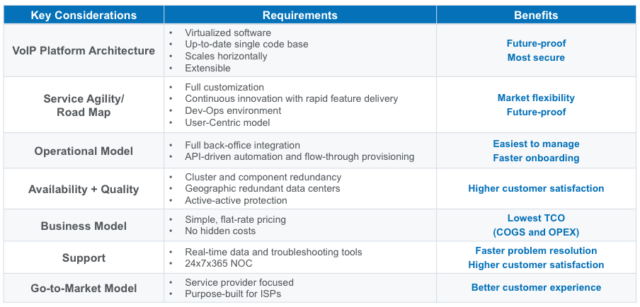The Federal Communications Commission (FCC) is funding rural broadband investments with its 2018 Connect America Fund (CAF) Phase II auction. And VoIP will play a role in making that happen.
In February I spoke at key shows for new broadband service providers: rural electric cooperatives and utilities. One of the major topics at these shows was funding for building and running these new broadband networks. The FCC CAF II auction is one funding option. CAF II will provide up to $1.98 billion in subsidies over the next decade to expand fixed, high-speed broadband connections in unserved rural areas.
This auction focuses on census blocks labeled unserved by broadband in 20 states and locations with extremely high deployment costs.
As we enter March, a key deadline is approaching: on March 30 applications to participate in the auction must be submitted. The auction is slated to begin on July 24.
One of the requirements for the application is that the service provider must demonstrate two years of experience providing a voice, broadband, and/or electric distribution or transmission service. Small telcos, cable companies, satellite, and wireless ISPs are expected to participate. But with the words “electric distribution or transmission,” the requirement also allows new players to enter the market: rural electric cooperatives (RECs) and utilities. We expect many REC to jump in as broadband providers and some will seek to take advantage of this FCC funding (see Electric Cooperatives Are Lighting Up Broadband in Rural America).
CAF II Phone Service Requirement
Notably, there’s a requirement for service providers taking the funding to offer “voice telephony as a standalone service” (without requiring a broadband service subscription) throughout their designated service area and at rates that are reasonably comparable to urban rates.
In taking funding, service providers must adhere to a coverage requirement that applies to broadband as well as phone service: 40% of the census block area by year three, increasing by an additional 20% each year and ending with 100% coverage by year six.
On March 10 the phone call turns 142 years old. On this date in 1876, Alexander Graham Bell made the world’s first telephone call to his assistant in Boston. Why is the FCC marrying a service that is over a century old to broadband? People and businesses still want, need, and use fixed phones. Further, there’s a good business reason for it.
Business Drivers for VoIP
While the FCC doesn’t mandate that the phone service be VoIP, we’d expect it will be unless it’s a decades-old telco eking out the useful life of its central office equipment. Here’s why offering VoIP makes sense along with broadband:
- Substantial addressable market – the FCC reports over 121 million phone lines in the U.S. and VoIP lines now exceed legacy phone lines (slightly over half are VoIP at 63.2 million subscribers); while landlines decline, VoIP is growing.
- Bundles produce results – Leichtman Research Group reports that 64% of broadband households subscribe to a bundle (not necessarily phone). Based on industry norms and our experience, broadband providers can expect 20-40% take rates for VoIP.
- Business demand – most SMBs are stuck on antiquated phone systems (the average portion of SMBs with a legacy phone solution ranges from 64-94% depending on the employee size); we’ve also heard businesses are less likely to switch broadband providers without a phone service bundle
- Revenue boost – Expect to be able to command pricing ranging from $15-35/month/home for residential and $20-50/month/seat for business services. The exact price will be informed by the market competition and the strategy you want to employ: maximizing for adoption vs. revenue.
- ROI Impact – With 60%+ gross margins from phone services, this revenue also helps accelerate the payback period on that broadband build-out.
In these rural areas where CAF II funded service providers will offer service, the most likely option is an outdated, expensive POTS line. VoIP is perfect to disrupt that and provide a modern, more convenient, lower-cost communication option to customers.
With CAF II-funded rural broadband deployments, VoIP will be available in areas not previously been offered. Our eBook “Got Fiber? You Need VoIP!” also outlines the business case for offering phone services for new ISPs.
Getting Started with VoIP
Offering phone service has traditionally been complicated and expensive. You had to build a network that called for significant technology investments and brought along staffing and regulatory and tax requirements. Or service providers used a white label reseller approach, which had product limitations, operational complications, and thin margins.
Now, there are cloud-based solutions and phone service partners that can significantly relieve you of the burden. Alianza is one of them, but there are others too. Below is a frame that can aid your requirements definition and partner selection.

Given the requirements for 100% coverage and rates comparable to urban ones, this should weigh into your phone solution decision-making as well. Can that partner build rate center coverage where you are taking funding to build broadband? Does the partner pricing model enable you to be competitive and sustain that for years?
Want to learn more about launching VoIP? We can help and make it easy with our cloud-based solution. Get in touch with us today to learn more!


